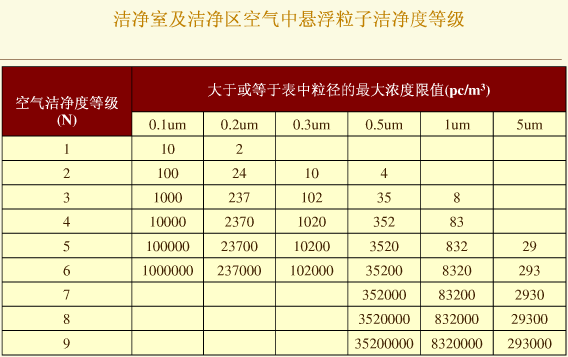
Must-read for photovoltaic enterprises: Decoration Design Plan for 100,000-level Purification workshop
Must-read for photovoltaic enterprises: Decoration Design Plan for 100,000-level Purification workshop
In the new energy industry, focusing on the field of distributed photovoltaic power generation, it is a high-tech enterprise specializing in the research and development, production, sales and service of string inverters, the core equipment of distributed photovoltaic power generation systems. The main product is string inverters, which are mainly used to convert the electrical energy generated by solar cell modules into stable alternating current that meets the power quality requirements of the power grid and is connected to the power grid. They are indispensable core equipment in solar photovoltaic power generation systems.
The production process flow of photovoltaic new energy silicon wafers
Broadly speaking, the production of photovoltaic new energy silicon wafers consists of two major parts: the production of silicon single crystal rods and the production of photovoltaic new energy silicon wafers. Single crystal rod growth - single crystal rod cutting and inspection - outer diameter grinding - slicing - chamfering (rounded edge) - grinding/grinding disc inspection - etching (chemical etching, LP-CVD+AP-CVD) The production process of silicon single crystal rods from the growth of single crystal rods to the outer diameter grinding is the production process of silicon single crystal rods. The process after slicing is the production process of photovoltaic new energy silicon wafers.
Environmental control requirements for each production process
A certain silicon wafer factory produces 4 to 6-inch photovoltaic new energy silicon wafers with an annual output of 4.8 million pieces. This company's photovoltaic new energy silicon wafers are applied in the manufacturing of discrete devices, power components and special integrated circuits.
Air conditioning purification system
The design of air conditioning purification is closely integrated with the layout of the process and the production flow. Different types and purposes of factory air conditioning and purification systems each have their own characteristics. The following introduces the air conditioning and purification system solution for the production process of photovoltaic new energy silicon wafers.
The significance of cleanroom technology to industrial production, with the rapid development of the economy and society, especially the scientific experiments and high-tech production processes represented by microelectronics, biotechnology, and high-precision machining, has put forward higher standards for the precision, miniaturization, high purity, high quality and high reliability of enterprise product fine processing. The indoor environment not only affects the physical and mental health and comfort of practitioners during their production and processing activities, but also influences production efficiency, product quality, and even the primary issue of whether the processing can be carried out.
The cleanroom summary concludes that the influence of the spatial environment on the processing process is as follows:
(1) It has a significant impact on the processing procedure
The indoor environment is one of the primary conditions that restrict whether industrial production, especially high-tech production, can proceed. For instance, in the chip production process of the microelectronics industry, the control of microscopic particles must meet the molecular level standards; otherwise, production cannot proceed or defective products will be produced. In the production environment of antibiotics, if there are some microbial strains present, the production cannot proceed normally.
(2) Affect production efficiency
The impact of indoor environment on production efficiency is reflected in the following two aspects: Firstly, a good environment not only ensures the physical and mental health and attendance rate of production and processing personnel, but also enhances their working mood and enthusiasm. On the other hand, a good environment can ensure the smooth progress of production and increase the pass rate of products.
(3) Affect product quality
The indoor production environment is one of the main factors affecting product quality. For instance, products such as light-sensing films, electronic devices, experimental reagents, precision electronic instruments and micro motors, if contaminated by dust, will have their quality reduced or even be scrapped. In the food processing industry, the presence of microorganisms can shorten the shelf life and reduce product quality.
(4) Cause environmental pollution
It is well known that environmental pollution is mainly caused by industrial pollution. Among them, air pollution and water pollution, on the one hand, pose a threat to people's physical and mental health, and on the other hand, they also affect the processing procedures and product quality.
The importance of cleanroom technology to industrial production; Therefore, in order to reduce the impact of indoor air pollution on the processing process, it is necessary to improve or solve the problem of indoor air pollution through clean technology. It can be fully affirmed that in a general workshop, it is completely impossible to control the concentration of suspended particles in all micro-indoor environments to meet the cleanliness level standards of the production process. Only by building a clean room, adopting a closed spatial structure, rational air flow organization and reasonable pressure difference can the required air cleanliness level be achieved within the micro-environment and the production needs be met.
Dust-free workshop purification system
1.Air purification systems can be classified into three types: horizontal laminar flow, vertical laminar flow and turbulent flow. The form of the selected airflow should be chosen based on the design layout and requirements.
2. The cleanliness of each room in the clean room and the ventilation time: The cleanliness depends on the number of ventilation times within a certain period of time. Therefore, carefully consider that the working requirements of each room in the purification workshop may be different, as well as the production process, and then determine the technical parameters of the purification system.
3. Structure: To ensure that the airflow is almost undisturbed, it is necessary to carry out structural design and layout of the workshop to prevent the generation of airflow vortices. When necessary, caution should be exercised to prevent unnecessary incidents from occurring.
4. When determining the design plan, it is necessary to carefully consider the nature of work and air flow conditions of the room first, understand the overall layout and requirements. The workshop uses a large amount of dust. To avoid the formation of ground air and rooms with high cleanliness requirements, they should be as far away as possible from other workshops.
5. The materials used for the walls and floors in the workshop must be dust-free, corrosion-resistant, heat-resistant, not prone to cracking, and not likely to generate static electricity. The choice can also be made based on the different working conditions of the room and the actual situation.
6. Pressure and Airflow: To ensure the cleanliness of the workshop, the sealing of the workshop must be tight to prevent external contaminated airflow from entering the workshop. To achieve this goal, the seminar must maintain a certain level of positive pressure. To obtain the required pressure, it is necessary to replenish an appropriate amount of fresh air.
7. Auxiliary equipment: Some auxiliary equipment should be used to ensure the cleanliness of the cleanroom, such as the air shower room at the entrance of the cleanroom.
Transfer Windows for delivering items, these devices must be suitable for the purification requirements of the cleanroom to fully ensure that their use does not affect the workshop and function properly.
8. The control of personnel and objects in the purification workshop is the main source of dust in the dust-free workshop. Of course, production equipment also generates dust, but people and objects are the sources of dust.
Therefore, complete control is necessary. For instance, before entering the clean room, everyone must pass through the dressing, purification and wetting system, and the number of employees must be limited. When items are delivered, they must be disinfected before delivery, and the delivery must be carried out in the correct manner.
Cleanroom grade standards
Cleanrooms need to remove pollutants such as micro-particles, harmful air, and bacteria from the air within a certain range, and control the temperature, cleanliness, indoor pressure, air flow velocity and distribution, noise and vibration, lighting, and static electricity inside the cleanroom within a certain required range. Usually, cleanrooms are classified according to the number of particles in the laboratory air.
The classification of cleanrooms varies by country, with different grade regulations. Although countries around the world have their own specifications at present, the Federal Standard (FS) 209E, 1992 of the United States is still generally adopted.
It should be noted that the classification of levels A, B, C and D is based on the ISO standard (the method adopted by the European Union), which itself includes both static and dynamic requirements. The old version of GMP adopted the cleanroom division method from the United States. The old version of cleanroom division only had a static concept and did not require a dynamic one.
In the federal Standard 209 (A to D) of the United States, the number of particles equal to or greater than 0.5mm in one cubic foot of air is measured, and this count is used to classify cleanrooms. The latest 209E version of this standard also accepts this metric. Federal Standard 209E is used domestically. The newer standard is TC 209 of the International Organization for Standardization.
Both of these standards classify cleanrooms based on the number of particles in the laboratory air. The cleanroom classification standards FS 209E and ISO 14644-1 require specific particle counting measurements and calculations to classify the cleanliness levels of cleanrooms or clean areas.

Cleanrooms are classified according to the degree of air cleanliness. If the grade of a cleanroom is only described by the number of dust particles, it can be assumed that the size of the dust particles is 0.5μm. For example, the maximum number of dust particles in Class 1, Class 10, and Class 100 cleanrooms is less than or equal to 1, 10, and 100 respectively. If the dust particle size is not 0.5μm, the cleanroom grade should be expressed by the number of grades at a specific dust particle size, which are respectively divided into Class 1, Class 10, Class 100, Class 1000, Class 10000, and Class 100000. The smaller the value, the higher the purification level. The higher the cleanliness, the higher the cost.
The requirements for cleanliness grades in various industries
Class 1 cleanroom: Mainly used in the microelectronics industry for manufacturing integrated circuits, the precision requirement for integrated circuits is sub-micron. Grade 10: Mainly used in the semiconductor industry where the bandwidth is less than 2 microns.
Class 100 cleanroom: It can be used for aseptic manufacturing processes in the pharmaceutical industry, etc.
Thousand-level purification workshop: Mainly used for the production of high-quality optical products, and also for testing, assembling aircraft snake-screw instruments, and assembling high-quality miniature bearings, etc.
Class 10,000 cleanroom: It is mainly used for the assembly of hydraulic or pneumatic equipment. In some cases, it is also used in the food and beverage industry. Besides, Class 10,000 cleanrooms are also commonly used in the medical industry.
Class 100,000 cleanroom: Class 100,000 cleanrooms are widely used in many industrial sectors, such as the manufacturing of optical products, the production of small components for large electronic systems, the manufacturing of hydraulic or pneumatic systems, the production of food and beverages, and are also frequently employed in the medical and pharmaceutical industries.
-
2025/06/07
No wasted money and efficient production at the same time! Guidelines for Energy-saving Planning and Design of Electronic Cleanrooms
In the electronics industry, what kind of cleanroom planning and design scheme is the most energy-efficient, most in line with process requirements, with low investment, low operating costs and high production efficiency? -
2025/06/07
Construction standards and design key points of GMP purification workshops for Biopharmaceuticals/Pharmaceutical factories
As a biopharmaceutical enterprise, the entire production process must meet GMP standards to ensure the quality of drugs. The GMP purification workshop technology of biopharmaceutical enterprises is one of the main means to ensure the successful implementation of GMP. Then, what knowledge about cleanrooms does a pharmaceutical manufacturing enterprise need to know? -
2025/06/07
A well-built food workshop must be safe and efficient: Key points to note in design and construction
The food and daily chemical industries are directly related to people's health. Their production environments have strict requirements for microbial control, prevention and control of foreign matter contamination, and guarantee of raw material stability. As a professional service provider in the field of food and daily chemical purification engineering, we offer customized cleanroom solutions that comply with GMP, HACCP and ISO 22000 standards based on the production characteristics of different sub-sectors, helping enterprises achieve quality upgrades and compliant production.


 WhatsApp
WhatsApp
